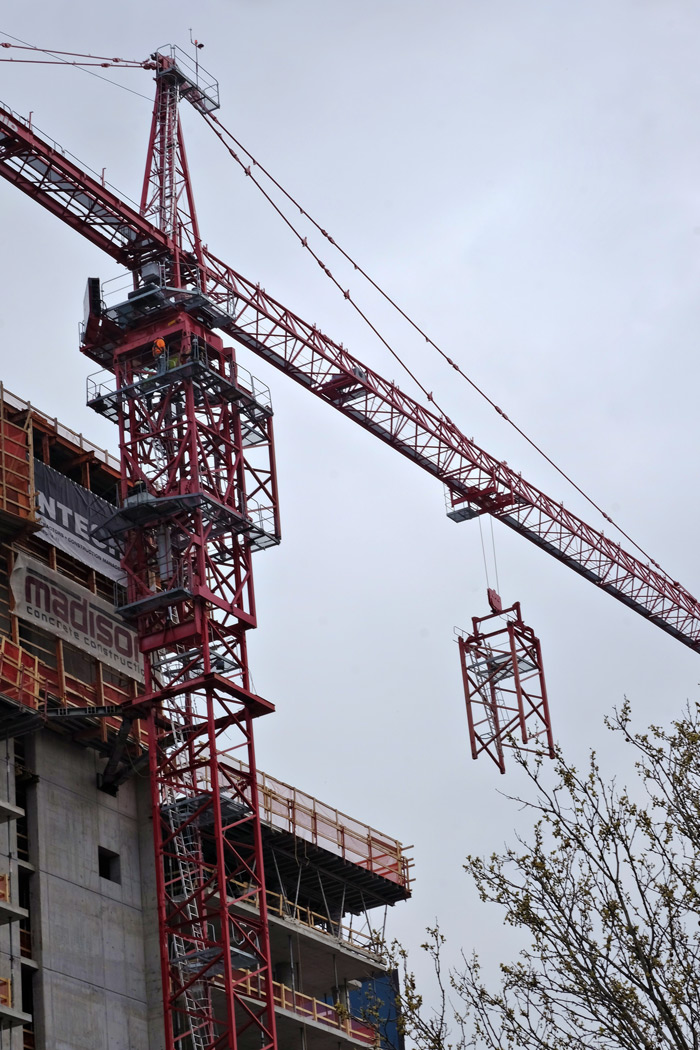Bootstrapping
Apr 6, 2016
 This crane has been caught in the act of growing itself. The object it's lifting into the air is a 20-foot section of crane-tower that it is about to swing into place to lengthen its own neck and make itself taller. The new section will be inserted at the top of the neck, which is currently at a level near the top of the building, where a sort of cage structure surrounds the tower.
This crane has been caught in the act of growing itself. The object it's lifting into the air is a 20-foot section of crane-tower that it is about to swing into place to lengthen its own neck and make itself taller. The new section will be inserted at the top of the neck, which is currently at a level near the top of the building, where a sort of cage structure surrounds the tower.
This cage is called a climbing frame, and it costs $60,000 to rent for a weekend. For a crane that wants to grow itself, the climbing frame is the secret to the whole pulling-itself-up-by-its-own-bootstraps thing.
The climbing frame is installed around the top of the crane's neck, just below the horizontal part of the crane, which does all the heavy lifting. The horizontal arm, with its gears and motor, has to be unbolted from the tower and settled onto the top of the climbing frame. Hydraulic jacks in the frame then boost it up, leaving a gap in the tower. The crane simply picks up a new section of tower and slips it into the gap.
Over the course of a few hours on Monday, this crane grew by six sections, 120 feet. We're told it's now as tall as it needs to be for the project–condos, of course, along the Schuylkill riverfront. In June, the crane guys say they'll be back to dismantle the whole thing and move it to its next job.
How will it ungrow itself? It can't. It's not a cannibal. Sometimes the crane will haul up a second, smaller crane onto the roof of the finished building, and the smaller crane will then lower the pieces of the big crane. To get the second crane down, they sometimes have to use a third, even smaller crane, which can be disassembled into pieces small enough to go down the elevator.
